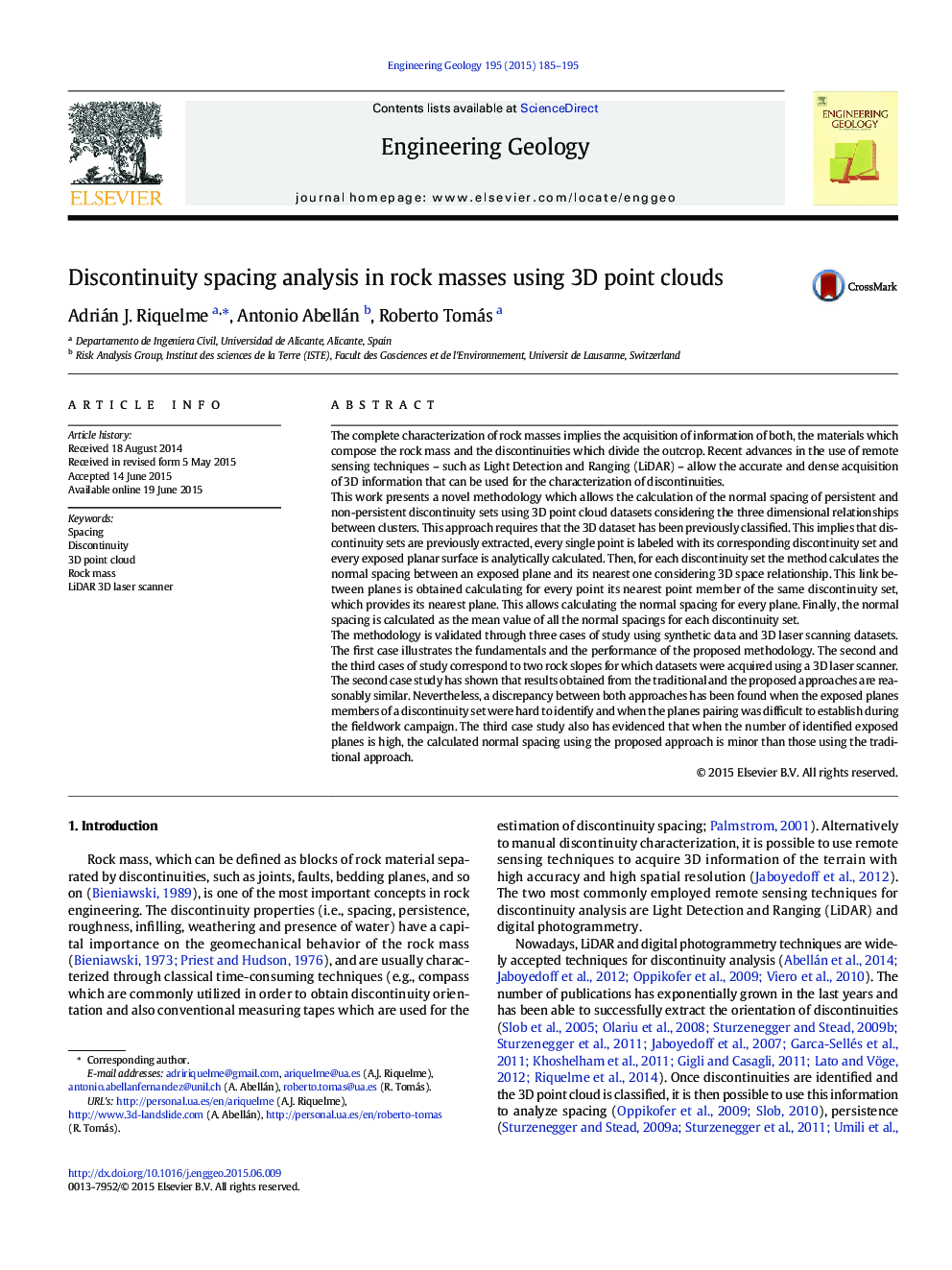| کد مقاله | کد نشریه | سال انتشار | مقاله انگلیسی | نسخه تمام متن |
|---|---|---|---|---|
| 4743294 | 1641790 | 2015 | 11 صفحه PDF | دانلود رایگان |
• A new methodology for the calculation of the rock mass discontinuities' spacing is presented.
• The method's input is a 3D point cloud of a rock slope.
• Discontinuities are considered as non-persistent.
• Different sources of information are used to validate the method.
The complete characterization of rock masses implies the acquisition of information of both, the materials which compose the rock mass and the discontinuities which divide the outcrop. Recent advances in the use of remote sensing techniques – such as Light Detection and Ranging (LiDAR) – allow the accurate and dense acquisition of 3D information that can be used for the characterization of discontinuities.This work presents a novel methodology which allows the calculation of the normal spacing of persistent and non-persistent discontinuity sets using 3D point cloud datasets considering the three dimensional relationships between clusters. This approach requires that the 3D dataset has been previously classified. This implies that discontinuity sets are previously extracted, every single point is labeled with its corresponding discontinuity set and every exposed planar surface is analytically calculated. Then, for each discontinuity set the method calculates the normal spacing between an exposed plane and its nearest one considering 3D space relationship. This link between planes is obtained calculating for every point its nearest point member of the same discontinuity set, which provides its nearest plane. This allows calculating the normal spacing for every plane. Finally, the normal spacing is calculated as the mean value of all the normal spacings for each discontinuity set.The methodology is validated through three cases of study using synthetic data and 3D laser scanning datasets. The first case illustrates the fundamentals and the performance of the proposed methodology. The second and the third cases of study correspond to two rock slopes for which datasets were acquired using a 3D laser scanner. The second case study has shown that results obtained from the traditional and the proposed approaches are reasonably similar. Nevertheless, a discrepancy between both approaches has been found when the exposed planes members of a discontinuity set were hard to identify and when the planes pairing was difficult to establish during the fieldwork campaign. The third case study also has evidenced that when the number of identified exposed planes is high, the calculated normal spacing using the proposed approach is minor than those using the traditional approach.
Journal: Engineering Geology - Volume 195, 10 September 2015, Pages 185–195
